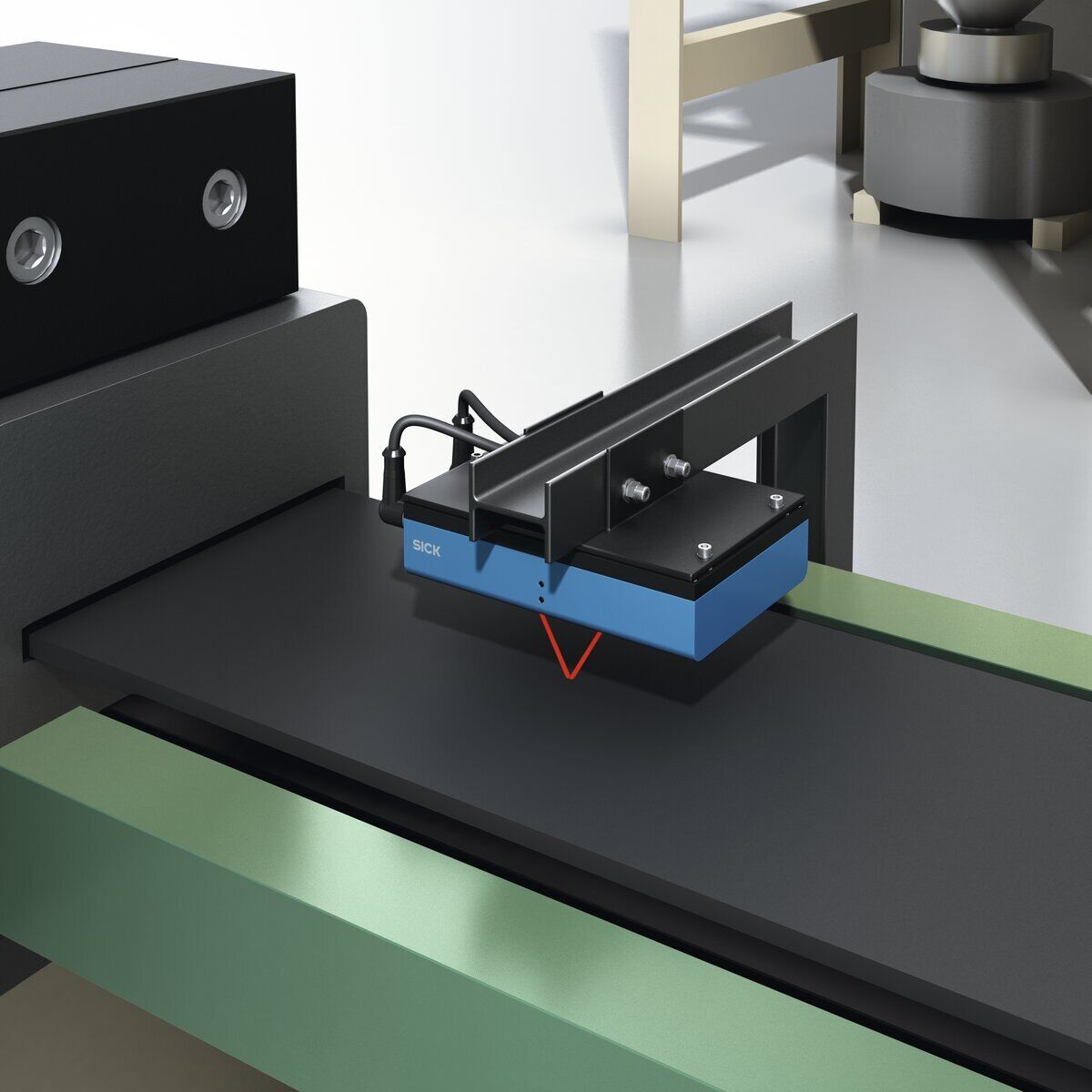IKO Roofing, a leading UK producers of roofing products, has become one the first building materials manufacturers in the UK to benefit from an innovative laser-based non-contact measurement sensor.
Digitalising production speed data using the new SPEETEC non-contact surface laser sensor from SICK solved a daily headache for operating engineers, while helping managers thousands of miles away to monitor output, costs and product quality.
Bituminous Roofing Felt Process
The production machine at IKO’s Appley Bridge site in the Lancashire town of Wigan has been producing a bituminous roofing felt to a variety of grades and specifications for more than 40 years. On the 30 metre-long machine, bitumen is applied at 170° C to a 1.0 metre-wide carrier base layer, before minerals and other materials are added according to closely-guarded recipes in a continuous process.
In the continuous production process, one measurement is more important than any other: The speed of the line controls how much material is applied and therefore directly corresponds to how closely the final product has kept to the product recipe. The closer this speed remains to the target, known as 100%, the better the product quality.
Close Tolerances
Keeping the line speed within close tolerances also optimises production output and allows for accurate management of the Bill of Materials.
For operating engineers working on the production line at Appley Bridge, optimising the machine speed is done from the control desk. Guided by a digital counter display located above them, experienced operators use their judgement to speed up or slow down the line and constantly monitor it to keep it within close tolerances during the continuous process. Even a difference of a few metres per minute could lead to inefficiencies in production and use of materials.
But, the engineers had a problem: The digital counter output took its speed measurement from a proximity sensor aligned to a gear mechanism near the beginning of the process. However, line speed data was fed into the company’s global MES (Manufacturing Execution System) from an encoder measurement positioned on the winder at the end of the machine.
As a result, different sources of speed data were used by UK operators and managers both in the UK and at the company’s HQ in Canada, resulting in readings that regularly showed a discrepancy. Operators could be chasing an unreachable target to hit the 100% speed and quality target, as they responded to feedback from senior management.
Measuring Product Speed Without Touching
“To get an accurate measurement we want to measure the speed of the product, rather than the speed of the machine, which does not take account of product slippage,” explains IKO Engineering Manager Paul Hayward.
“But using a sensor, like a measuring wheel encoder, that is in direct contact with the product is problematic for a material like roofing felt, that could be hot or sticky near the beginning of the process and would also be subject to significant wear.
“We also wanted to move away from measurement devices that have to be integrated into the machine. They can become encrusted in dirt from the process and difficult to access for maintenance or replacement.
Non-Contact Laser Sensor
The SICK SPEETEC® is a non-contact surface laser sensor for speed and length measurement for a wide range of continuous, web-fed processes, or measurement of cut sections, with a resolution down to 4 µm. The SPEETEC® uses the Laser Doppler measurement principle. It can work at speeds between 0.1 and 10 m/s to measure directly on the material surface with an accuracy of 0.1%, and a repeatability of 0.05%.
A SICK SPEETEC® was set up and integrated directly into the machine’s Allen Bradley PLC, with no additional electronic device necessary to process the signal output. The measurement is automatically converted onboard the sensor into TTL/HTL signals identical to those of an incremental encoder, so that they can be easily integrated into the machine control system.
The SPEETEC’s digital output was integrated with both the visual speed counter and IKO’s MES system, where it is used to output measurements on the production floor, as well as being accessed remotely by the international management team.
Consistent Data Output
“Now at our daily engineering meetings, and in our communications with the IKO HQ, we can be confident of accurate digital data. The SPEETEC® is quietly getting on with its job, it’s showing 100% and everything is normal. It’s literally a question of no news is good news!” concludes Hayward.



